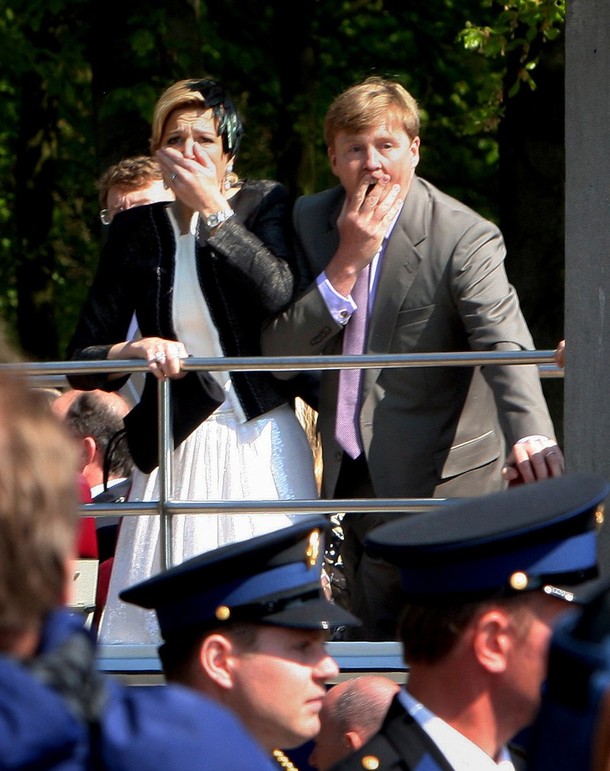Op 4 mei 2020 sprak koning Willem Alexander op een lege Dam een korte toespraak uit bij de jaarlijkse Dodenherdenking die dit jaar – om reden van corona-virus-besmettingsgevaar zonder publiek. Voormalig verzetskrant (in een ver verleden) Het Parool plaatste op de (digitale) voorpagina van de krant vlak erna een foto van Willem Alexander van dat moment op de Dam met de kop:
“Koning Willem-Alexander kritisch op rol Wilhelmina in oorlog”
De volledige tekst van de toespraak nalezend is hier de opstap naar wat Het Parool als ‘kritiek’ kenmerkt. Willem Alexander steunt bij zijn betoog op de herinneringen van Holocaust overlever Jules Schelvis (1921-2016) die als jongeman leven uit Kamp Sobibor terugkwam:
Wat ik me ook herinner, is zijn verslag van wat er aan de reis voorafging. Na een razzia werd hij samen met zijn vrouw en vele honderden anderen weggevoerd naar station Muiderpoort. Ik hoor nog zijn woorden: “Honderden omstanders hebben zonder vorm van protest toegekeken hoe de overvolle trams, onder strenge bewaking, voorbij reden.”
Dwars door deze stad. Dwars door dit land. Voor de ogen van landgenoten.
Willem Alexander vervolgt even later – impliciet terugverwijzend naar deze passage – en na een passage over heldenmoed van verzetsstrijders:
Maar er is ook die andere realiteit.
Medemensen, medeburgers in nood, voelden zich in de steek gelaten, onvoldoende gehoord, onvoldoende gesteund, al was het maar met woorden. Ook vanuit Londen, ook door mijn overgrootmoeder, toch standvastig en fel in haar verzet. Het is iets dat me niet loslaat.
Meer zegt hij niet. Wat is nu zijn kritiek op zijn grootmoeder Wilhelmina, het blijft raden….
Zou hij uiteindelijk dan toch Nanda van der Zee (1951-2014) haar boek gelezen hebben uitgegeven in 1997 “Om erger te voorkomen”? Het boek gaat dat gaat over het vertrek van Koningin Wilhelmina en het voltallige kabinet naar Engeland, en de gevolgen die dit had voor het landsbestuur, de mate van collaboratie van Nederlandse ambtenaren en de hieruit voortvloeiende hachelijke positie van onder meer de Joden in Nederland tijdens de Tweede Wereldoorlog.

Reden voor mij om een zes jaar geleden in memoriam voor Nanda van der Zee opnieuw on-line te plaatsen, omdat haar destijds – 1997 – zeer slecht ontvangen kritiek op de rol van koningin Wilhelmina wellicht nu eindelijk een herwaardering kan krijgen. Ik plaats die tekst uit 2014, in de vorm waarin ik deze (onaf en wel) achterliet. Er staat genoeg in (ondersteund met worldcat.org links naar alle genoemde publicaties) om te kunnen bijdragen aan – na 75 jaar vertraging – een voortschrijdend inzicht over de werking van de vernietigingsmachinerie an het Derde Rijk en het brede scala van accommodatie tot collaboratie, niet enkel van fanatieke en wrede fascisten en Nazis maar ook van nette Nederlandse beambten, bestuurders en gezagsdragers.
Nanda van der Zee: In Memoriam 1951-2014 ~ historica met een ander geluid over de jodenvervolging in Nederland (een tekst in beweging)
[NB dit is een curieus geval… waarbij ik een tekst plaats… die maar niet tot een einde wil komen… dat is niet verbazingwekkend voor hen die de controverses rond Nanda van der Zee kennen… ik heb zeker positieve gevoelens over een deel van haar werk, maar wil ook niet nalaten mij tegenwinds nogmaals door de storm van kritiek te worstelen op haar kernboek “Om erger te voorkomen”, alsook de deels onwelgevallige ontvangst van haar biografie over Presser… nu had ik domweg dit tableau en zijn tekst kunnen weghalen zolang ik niet klaar was, maar door de bijzondere tragische omstandigheid van haar al te vroege dood afgelopen week, is dat iets dat ik liever niet wil doen, omdat de belangstelling voor een verleden persoon juist in de dagen erna is… Hier staat dus – dat kan in onze digitale tijd – een tekst die nog in beweging is… inclusief de eerste notities
Impulsief geschreven tekst van gisteren (27/3/2014); nu ligt er een stapeltje notities naast mijn toetsenbord en dien ik mijn betoog wat meer uit te breiden… en met citaten te verduidelijken (heb het omstreden boek van Nanda, nogmaals door gelezen). Later vandaag (30/3/2014) is de definitieve tekst wel klaar (de doden hebben in ieder geval geen haast); ik laat toch deze tekst hier staan, de eerste opwelling blijft de basis. tj.]
NANDA VAN DER ZEE overleden lees ik een uurtje terug (1) en dat kwam als een schok… (62 jaar pas, als gevolg van een ongeval met complicaties; van van een trap) nog maar enkele dagen terug noemde ik haar naam aan de ontbijttafel… “moet toch eens contact met haar zien te krijgen”… ben al sinds lang een kritisch bewonderaar van haar werk als historica over de Jodenvervolging en hoe de Nederlandse autoriteiten vergaand verwikkeld raakten in ‘die Entlösung’. Zij was als een leerlinge van Jacques Presser (1899-1970) hoewel zij hem nooit ontmoette. Over hem schreef zij ook een mooie biografie, gebaseerd op zijn geschriften, correspondentie en interviews met mensen die hem wel gekend hadden.
Haar visie – gepubliceerd in het jaar 1997 – op de vlucht van de koninklijke familie tijdens de Duitse inval en het onvermogen van Wilhelmina en haar regering om het verzet tegen de jodenvervolging te stimuleren en alle catastrofale gevolgen van die halfslachtigheid, was omstreden. Omstreden bij de ‘staatse historie-makers’, verfoeid door de dwepers met het Huis van Oranje, gehaat door het naoorlogse joodse establishment dat een echt diepgaande analyse van het eigen desastreuze verleden het liefst uit de weg gaat.
Mij sprak dat boek aan omdat eigen onderzoek over de jaren, met name over de verdwenen Amsterdamse Jodenbuurt, mij in een zelfde richting had gestuurd. Dit vooral omdat zij hierin niet enkel een aanval doet op de rol van Koningin Wilhelmina en ‘haar regering’ in ballingschap, maar ook dieper in gaat op hoe het ambtelijk apparaat voor een groot deel tijdens de bezetting in takt bleef (denk daarbij zowel aan de directe rol van politie en marechaussee bij het oppakken van Joden, als de dienstbevelen vanuit provinciebesturen en ministeries aan gemeenten om Joden te ontslaan, registeren en te doen oppakken). Een ambtelijk apparaat dat dienstbaar werd gemaakt aan de vernietiging van de Joden. Van de Zee heeft het over hoe de “absolute normen van goed en fout, die tijdens de oorlog binnen de landelijke illegale bewegingen werden gehanteerd” na de oorlog niet gehanteerd konden worden, omdat te velen uit het overheidsapparaat de bezetters en de eisen die zij stelden wisten te ‘accommoderen’.
“Juist onder de mensen in de hoogste ambtelijke echelons bevonden zich de vele opportunisten, en juist die echelons werden over het algemeen ontzien en zijn ook later door de Parlementaire Enquête Commissie de hand boven het hoofd gehouden, terwijl alleen al het NSB-lidmaatschap voldoende was om in Westerbork geïnterneerd te worden.” [‘Om erger te voorkomen’, p.309]
— intermezzo —
Tijdens eigen onderzoek bij wat toen nog het RIOD heette (Rijksbureau voor Oorlogsdocumentatie), voor het maken van tentoonstellingen over de geschiedenis van Nieuwmarktbuurt en Waterlooplein, waar wij destijds tegen gedwongen verhuizingen en sloop voor city-vorming streden, was deze betrokkenheid van ook het gemeentelijk apparaat mij/ons duidelijk geworden. Zo werd ook op de zolder van het RIOD aan de Herengracht, na herlezing van Presser (De Ondergang, 1965) de kaart van het Gemeentelijk Bureau voor de Statistiek gevonden, die gediend had om het – uiteindelijk half open – joodse ghetto te vormen. Het zien van dat document kwam als een schok. Dat was in de vroege jaren zeventig. Later in 1987 ontstond zo een actie bij de opening van de nieuwe huisvesting van het Joods Historisch Museum, waar ik vlak om de hoek woon, voor het tonen van een voorbeeld van dat gemeentelijk kaartmateriaal dat instrumenteel was bij de jodenvervolging. Ik publiceerde toen een groot formaat manifest waarop die kaart herdrukt was, met een commentaar tekst, met deze verantwoording:
“Ook in het zojuist geopende Joods Historisch Museum heeft deze kaart geen plaats gekregen. Wel zijn er, in het verhoudingsgewijs zeer beperkte deel dat aan de vervolging In de tweede wereldoorlog is gewijd, de hiervoor genoemde verordening tot registratie van de joden en gemeentelijke formulieren tot uitvoering ervan te zien. Nu zijn er honderdduizenden documenten, die hetzelfde lot van in vergetelheid rusten in stoffige archieven beschoren is. Waarom nu juist dit document gereproduceerd?
-Omdat het in al zijn koele nauwkeurigheid vrijwel in een oogopslag de werking van de vernletlgingsmachlnerie toont.
-Omdat de huidige Informatiemaatschappij oneindig veel verdergaande mogelijkheden tot registratie, selectie en de daar op votgende uitschakeling en vernietiging heeft en deze kaarten je dat met een schok duidelijk maken.
-Omdat het hier een product van gewone keurige gemeenteambtenaren betreft, waardoor je des te meer beseft hoe diep de mogelijkheden tot onderdrukking en vernietiging besloten zijn In de ‘eigen samenleving’; hoe bedriegelijk het is al het kwaad aan herkenbare ‘gemeen ogende bruten’ toe te schrijven; hoezeer je zelf deel uitmaakt van zo’n ‘stelsel’.”
–
[Tijen, Tjebbe van. 1987. “Een bijdrage aan het Joods Historisch Museum: (oproep tot het opnemen van de kaart) “Verspreiding van de joden over de gemeente (mei 1941)”. Gepubliceerd als een bijlage bij het weekblad Bluf no.267 d.d. 29/4/1987.
https://imaginarymuseum.org/downloads/tt44EenBijdrageAanHetJoodsHisMuseum1987.pdf De Universiteitsbibliotheek Amsterdam heeft een exemplaar in haar verzameling http://www.worldcat.org/oclc/71517530]
— /intermezzo —
Het boek van Nanda van der Zee uit 1997 was dan ook geen geschrift dat diende om mij de ‘ogen opende’, maar wel een studie die omwoelde wat – na vele jaren eindelijk netjes toegedekt leek, dat blootlegde wat met pijn en moeite gereviseerd leek te zijn: de rol van Koningin Wilhelmina en haar vertrouwelingen die het lot van de Joden niet anders dan zijdelings van invloed lieten zijn op hun handelen. (In verband met het ontbreken van een index in het boek geef ik hier enkele referenties naar treffende passages: ‘Om erger te voorkomen’ over Wilhelmina: pagina’s 223, 231-234, 240). Het boek spreekt ook in detail over de hoge ambtenaren die het civiele bewind onder de Duitse bezetting vorm gaven en hun afkeer van alles wat sabotage of andere vormen van verzet te maken had (over Secretaris-Generaal H.M. Hirschfeld van Economische Zaken: p. 178, 193, 202- en 298; over Secretaris-Generaal Binnenlandse Zaken K.J.Frederiks die bijna tot op het laatst aanbleef, alsook over Secretaris-Generaal J.C. Tenkink van het Ministerie van Justitie: p. 204-, 288). Van der Zee haalt een ter illustratie oproep uit begin 1941 aan van deze functionarissen aan het Nederlandse volk, waarin – met besmuikte woorden – verzet en sabotage afgewezen wordt:
“De oorlogsomstandigheden plaatsen ons voor vele harde feite, welke aanvaard moeten worden. Wanbegrip voor hetgeen deze tijden ook van ons Nederlanders eisen, leidt alleen tot verderf.” [p.298]
Een van de eersten die de aanval op het boek van Van der Zee openende was de toen net als directeur van het NIOD aangereden historicus Hans Blom. Onder de kop “Een droevig boek” schrijft hij in het Historisch Nieuwsblad:
“In het algemeen staat het verhaal van de vlucht van koningin Wilhelmina, dat een prominente plaats in het boek inneemt als prototype van de met schuld beladen rol van de Nederlandse elite, zeer wankel. Het kan de toets der bronnenkritiek niet doorstaan. Volgens Nanda van der Zee liet Wilhelmina zich uitsluitend leiden door zorg voor de eigen veiligheid. De latere verhalen met een nobeler strekking waren pogingen de waarheid te verhullen.”
[Blom, Joahannes Cornelis Hendrik (Hans). Een droevig boek. Historisch Nieuwsblad; nr.2/1997. on-line: “http://www.historischnieuwsblad.nl/nl/artikel/5628/een-droevig-boek.html ]
“Toets der bronnenkritiek”? Maar legt Van der Zee niet juist in haar studie uit waarom er met name over Wilhelmina’s haar optreden onvoldoende bronnen zijn en en dat de bronnen die er zijn ernstige “mankementen” vertonen?
“De bijlagen, verhoren en verslagen van de PbC [Parlementaire enquête naar het regeringsbeleid in de Tweede Wereldoorlog, 1947-1956; tj.], vormen op tal van punten een rijke bron voor de historicus, maar mankementen zijn er ook. Allereerst is daar het feit dat men op grond van artikel 55 van de grondwet, ‘de koning is onschendbaar, de ministers zijn verantwoordelijk’, koningin Wilhelmina’s aandeel in het beleid niet heett getoetst. In Londen was er geen overleg mogelijk geweest tussen kabinet en parlement, zodat het overleg tussen het staashoofd en de ministers in die zin veranderde dat het staatshoofd een veel groter stempel op het beleid zette dan in normale tijden mogelijk was. Het was dus ter wille van de historische waarheid van wezenlijk belang koningin Wilhelmina persoonlijk in de enquête te betrekken. Maar integendeel, niemand van de ondervraagden mocht over haar spreken of zelfs maar aan de commissie vertellen wat hij met koningin Wilhelmina in Londen had besproken. Het moest toch ook van staatkundig belang worden geacht de rol te kennen van een staatshoofd, dat voorheen, zelfs mét parlementaire controle, verstrekkende kabinetsbesluiten hoogstpersoonlijk had ‘overruled’, temeer nu een periode werd onderzocht waarin die parlementaire controle had ontbroken?”
[Zee, Nanda van der. 1997. Om erger te voorkomen: de voorgeschiedenis en uitvoering van de vernietiging van het Nederlandse jodendom tijdens de Tweede Wereldoorlog. Amsterdam: Meulenhoff. ; p. 310. http://www.worldcat.org/oclc/782262483 ]
Tien jaar later is de controverse nog niet weggeëbd. Nu zijn het studenten van van Blom c.s. die in een passage en voetnoot van hun (duo) proefschrift de aanval op Van der Zee nogmaals inzetten en met een voetnoot verluchtigen waarin wél de sabelende kritiek, maar niet de prijzende of ondersteunende aangehaald wordt. Het gaat hier om een studie van Pim Griffioen en Ron Zeller, die ook een ander stokpaard uit de tijd van het NIOD-bewind van Blom, internationaal vergelijkend onderzoek berijden:
“Bij zijn aantreden als directeur van het Rijksinstituut voor Oorlogsdocumentatie in 1996 formuleerde Blom nog eens nadrukkelijk de vernieuwingen in het onderzoek die hij voorstond, hoewel hij zich de hardnekkigheid van het goed-fout perspectief realiseerde: ‘Bij geschiedschrijving moet het gaan om het begrijpen en verklaren van gebeurtenissen, niet om het kwalificeren ervan. Maar mensen willen zelden een wetenschappelijk onderbouwde verklaring lezen, zij willen horen of iets goed of fout is geweest. De verklaring waarom uit Nederland het hoogste percentage joden is weggevoerd, beweegt het publiek niet. Het roept: het is schandelijk dat dit gebeurd is.’ (167) Het in 1997 verschenen boek van N. van der Zee is een kenmerkend voorbeeld van de al genoemde voortzetting van de moreel-geladen benadering. Ze schreef het opvallend hoge percentage joodse slachtoffers in Nederland – zonder enige internationale vergelijking – toe aan het vertrek van koningin Wilhelmina en het kabinet in ballingschap in mei 1940 en de weerslag daarvan op de houding van de achtergebleven bestuurders tijdens de bezetting. (168)”
[Griffioen, Pim, and Ron Zeller. 2008. Vergelijking van jodenvervolging in Frankrijk, België en Nederland, 1940-1945: overeenkomsten, verschillen, oorzaken. S.l: s.n.]. ; p. 32.1. http://www.worldcat.org/oclc/275136663 ]
Dan volgt nog de voetnoot met opsomming van kritieken op Van der Zee, met weglating van andere reacties:
“Noot 168: Nanda van der Zee, Om erger te voorkomen. De voorbereiding [voorgeschiedenis] en uitvoering van de vernietiging van het Nederlandse jodendom tijdens de Tweede Wereldoorlog (Amsterdam: Meulenhoff, 1997). Hoewel de ondertitel een overzichtswerk suggereert, komen de Duitse bezetters en hun anti-joodse politiek niet of nauwelijks in het boek voor! Vergel. Johannes Houwink ten Cate, ‘De jodenvervolging zonder Duitsers. Nanda van der Zee doet de waarheid geweld aan’, Het Parool, 11 april 1997, p. 13; J.C.H. Blom, ‘Een droevig boek’, in: Historisch Nieuwsblad jrg. 6 (1997), nr. 2, pp. 4–5; Gie van den Berghe, ‘Het verleden tot last: Nederland en de jodenuitroeiing’, in: De Morgen, 26 juni 1997; Pim Griffioen, Ron Zeller, ‘Wilhelmina’s vertrek was geen vlucht’ [oorspr. titel: Vertrek van Wilhelmina was niet van wezenlijk belang voor hoge aantal joodse slachtoffers], in: NRC Handelsblad, 19 augustus 1997, p. 7.”[Ibid.; p. 32.2.]
Nog maar kort geleden was ik er getuige van hoe diep die haat tegen Nanda van der Zee gaat, toen ik het waagde bij een presentatie – bij de Universiteit van Amsterdam – van een nieuw boek over Gertrude van Tijn (betrokken bij de Joodse Raad) van de hand van Bernard Wasserstein (2), haar naam te noemen. Bij de vragenronde, plaatste ik een opmerking over de onbelichte rol in Wasserstein’s boek van van het gemeentelijke en landelijke ambtenarenapparaat bij de jodenvervolging. Verwees daarbij ook naar het boek van Nanda van der Zee. “Om erger te voorkomen”… hoongelach uit de zaal was mijn deel. En die hoon, niet zozeer van Bernard Wasserstein, maar van de aanwezigen, is in mijn geheugen blijven hangen. Het was een echo uit het jaar 1997. Zat daar bij die boekpresentatie anno 2013 niet de staf van het NIOD? Was daar ook niet een vertegenwoordiger van het Joods Historisch Museum? Hoe erg moet niet de afkeer bij die groep van het werk van Nanda van der Zee zijn, om enkel bij het noemen van haar naam, tot zulke uitbarstingen te komen? “Om erger te voorkomen” is de titel van dat boek, dat – voor de al te brave vaderlandse geschiedschrijving – gewaagde stellingen poneert en die ook weet te onderbouwen. Nu over dat laatste was, zoals altijd bij geschiedenisboeken, die zich niet wensen te conformeren aan de heersende ‘canon’, van het begin af aan veel te doen, De bronnen worden dan bekritiseerd als “tendentieus benaderd”, “niet genoeg gespecificeerd.”
Met dat laatste kan ik het deels wel eens zijn, het bronnen-apparaat had uitgebreider kunnen zijn en de bronnen behoeven een meer uitgebreide context, ook een index ontbreekt, maar dat alles doet weinig af aan de lijn van haar bevlogen betoog. Ik heb altijd gehoopt op een latere, uitgebreidere, editie, soms hoorde ik via via daar wel eens iets over, maar voor zover ik weet is het daar niet van gekomen. Het boek is wel in het Duits, maar niet in het Engels vertaald en dat is eeuwig zonde. (3)
“Om erger te voorkomen” is een historisch geluid dat node gemist wordt in het land van de “De HuichelHollander”, met zijn selectieve morele verontwaardiging en zijn Tweede Wereldoorlog slachtoffer-kleed, dat hem slecht past.
Nogmaals de prent…
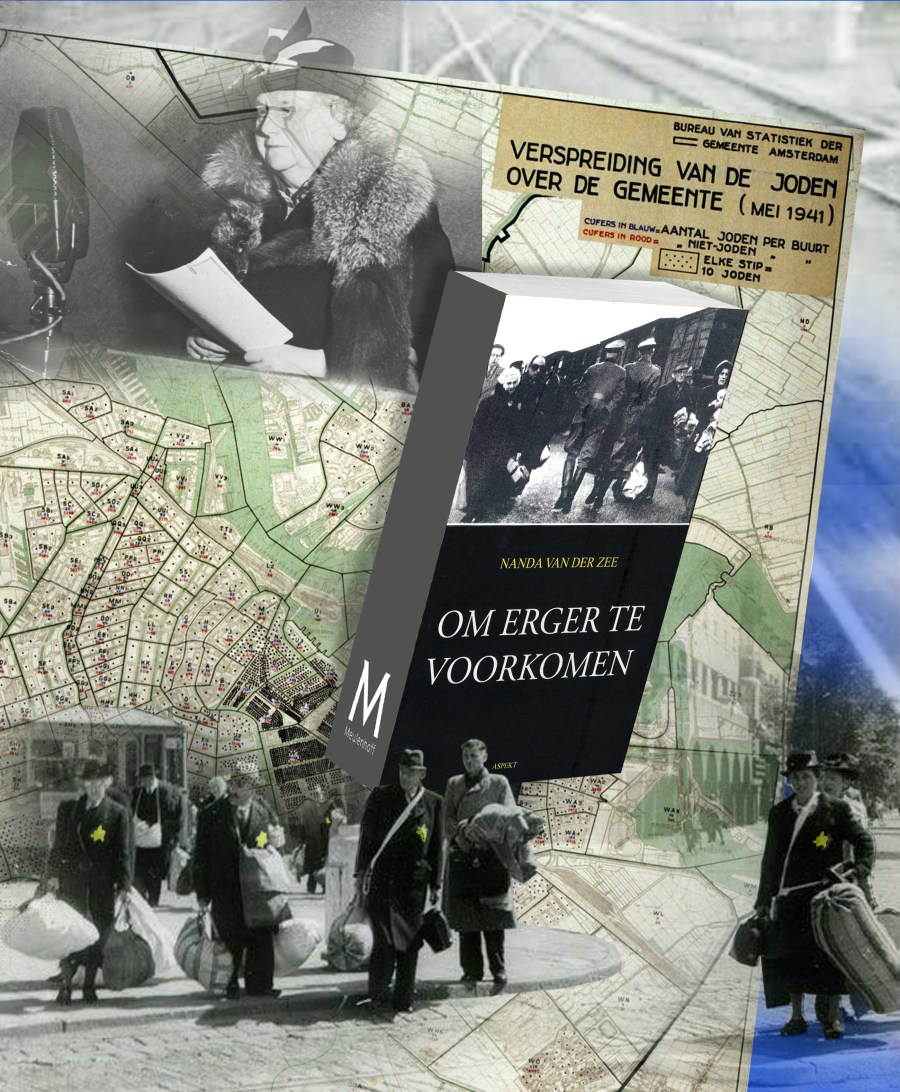
De prent toont vijf elementen:
1) Wilhelmina sprekend vanuit Londen via Radio Oranje, de spoorrails van de Nederlandse spoorwegen waarover die honderdduizend Joodse landgenoten vervoerd zijn via Nederlandse doorgangskampen naar de Nazi vernietigingskampen;
2) Spoorwegen/rails waar pas gestaakt werd – na een oproep van de Nederlandse regering in ballingschap in september 1944 – toen het ‘Abtransportieren voor het grootse gedeelte gedaan was;
3) een groep Joden met enkele schamele bezittingen staand bij een tramhalte op het Daniël Willinkplein (nu Victorieplein) verzamelpunt in Amsterdam-Zuid wachtend op de gemeentelijke pendel-tram naar het Muiderpoortstation, waar zij op de trein naar hun vernietiging gezet gaan worden, op een prachtige zonnige zondag, 20 juni 1943;
4) de beruchte kaart geproduceerd door het Gemeentelijk Bureau voor de Statistiek in februari 1941, waarop per statistisch buurtblok de aantallen joden en niet joden in blauwe cijfers voor Joden en rode cijfers voor niet-joden weergegeven worden, op de kop van de kaart van iets meer dan één vierkante meter, staat het heel visueel efficiënt uitgelegd, “ieder stip = 10 Joden”; het is een kaart waarover ik vele jaren terug voor het eerst las in het boek van Jacques Presser “De ondergang” (5), een kaart die NIET in het Joods Historisch Museum te zien is, maar wel sinds enige tijd in Het Verzetsmuseum, wat voor mij totaal onbegrijpelijk is, ook niet te zien in de Hollandse Schouwburg waar onze nieuwe generaties onderricht worden in de Holocaust;
5) het boek van Nanda van der Zee, dat al deze elementen en vele malen meer samenbindt; eer haar door het nog eens na te slaan, voor het eerst te lezen, of het anderen aan te raden. Hier is te vinden in welke bibliotheken het boek in Nederland en elders te vinden is: http://www.worldcat.org/oclc/782262483
Als u na het herlezen of lezen nog steeds vindt dat Nanda van der Zee het gedeeltelijk of geheel en al mis had, onderbouwt u dan – publiekelijk – uw argumenten tegen wat Nanda van der Zee betoogt. Enkel algemene kwalificaties en opmerkingen, zoals “controversieel” of “omstreden” zonder enig verdergaand blijk van kennis of verworven inzichten waar vanuit dat beweerd wordt, zijn niet meer dan uitingen van lafheid en een falen om het eigen verleden voortdurend vanuit talloze gezichtshoeken te durven bezien.
Geprecisieerde kritiek zou ons verder kunnen helpen inzicht te krijgen en het hoe en waarom van wat een jonge generatie historici “de Nederlandse Paradox” noemt…. (6)
—————————————–
Noten
(1) Het Parool 27/3/2014: “Historica Nanda van der Zee (62) overleden (…)”
https://www.parool.nl/nieuws/historica-nanda-van-der-zee-62-overleden~bde2d06a/
“Van der Zee schreef vijf boeken die allemaal de Duitse bezetting behandelen. – In het boek ‘Om erger te voorkomen’ verweet Van der Zee koningin Wilhelmina ‘grove nalatigheid’ vanwege haar vlucht naar Engeland. Door de vlucht maakte zij het voor de Duitsers mogelijk een civiel bestuur in te stellen, terwijl Hitler enkel een militair bestuur in Nederland voor ogen had. Hierdoor kwam het dagelijks bestuur in handen van de Duitse bezetter, wat de opsporing en vervolging van de joden makkelijker maakte. – De vlucht van de koningin was volgens de historica enkel in het belang van haar eigen veiligheid en werkte demotiverend voor de achtergebleven ambtenaren. Onder de nieuwe leiding van het Nazi-bestuur schikten zij zich naar de Duitse dictaten en in plaats van de vervolging tot een minimum te beperken, werkten zij mee aan de vernietiging van de joden.”
Deze tekst destijds in De Volkskrant:
https://www.volkskrant.nl/nieuws-achtergrond/historica-nanda-van-der-zee-62-overleden~bde2d06a/
(2) Wasserstein, Bernard, Toon Dohmen, and Marianne Tieleman. 2013. Gertrude van Tijn en het lot van de Nederlandse Joden. [Amsterdam]: Nieuw Amsterdam Uitgevers. http://www.worldcat.org/oclc/843441946
(3) “Um Schlimmeres zu verhindern…” : die Ermordung der niederländischen Juden: Kollaboration und Widerstand. http://www.worldcat.org/oclc/1142151890
(4) Een enkel voorbeeld van het gemis van een Engelse vertaling van “Om erger te voorkomen” is een meer algemene studie over ‘militaire bezettingen’ van de hand van Peter M.R. Stirk uit het jaar 2009, waarin natuurlijk ook de door Van der Zee geanalyseerde ‘civiele bestuursstructuur van de bezette Nederlanden tijdens WWII’ aan de orde komt. Hierbij worden wel Gerrit Hirschfeld en J.C. Blom aangehaald, maar mist iedere referentie naar haar werk. Dat is spijtig omdat juist haar controversiële benadering, bij zo’n bredere studie tot meer diepgang had kunnen leiden.
–
“The introduction of civilian administrations into occupied Netherlands and Norway during the Second World War was not constrained by international agreements and was driven by an even more radical, and futile, political ambition. In both cases, the administrations – headed by a Reichskommissar, Terboven in Norway and Seyss-Inquart in the Netherlands – were intent upon a replication of the ‘legal revolution’ that they believed had led to the Nazi seizure of power in Germany and which was supposed to prepare these Germanic peoples, as they saw them, for incorporation into a Greater Germanic Reich. (30) [bold text by me tj.] Both were aware that the indigenous national socialist movements, led by Vidkun Quisling and Anton Mussert respectively, were small and bitterly opposed by many of their fellow nationals. Both were also aware that they had to maintain a diffi cult balance. Seyss-Inquart, for instance, was torn between the competing pressure of ‘the far reaching suppression of all possible forms of public activity’ in the interests of the security of the occupier and the desire to ‘awaken and control the political will . . . to concede such freedoms as will make the fi nal result into a decision which the Dutch have made for themselves’.(31)
—
31. Quoted in Gerhard Hirschfeld, Nazi Rule and Dutch Collaboration (Oxford: Berg, 1988), p. 56. See also Seyss-Inquart’s proclamation of 14 May 1940, in Raphael Lemkin, Axis Rule in Occupied Europe (Washington, DC: Carnegie Endowment for International Peace, 1944), p. 448. http://www.worldcat.org/oclc/1138941903
—
Blom is referred to in a short passage on the ‘Nederlandse Unie’ and it’s failure.
32. Hirschfeld, Nazi Rule and Dutch Collaboration, pp. 73–4. On the idea of renewal, see J. C. H. Blom and W. ten Have, ‘Making the New Netherlands: ideas about renewal in Dutch politics and society during the Second World War’, in M. L. Smith and Peter M. R. Stirk (eds), Making the New Europe (London: Pinter, 1990), pp. 87–97.”
[Stirk, Peter M. R. 2009. The politics of military occupation. Edinburgh: Edinburgh University Press. site.ebrary.com/id/10367669. ; p. 102. http://www.worldcat.org/oclc/608504012 ]
“Seyss-Inquart had also sought to attain his goal through reshaping the institutional and, even more so, the associational structure of Dutch society. Formal governmental structures, aside from the representational bodies, remained relatively unaffected. As in the military government of occupied Belgium, German General Commissars operated through the Secretary-Generals of the Dutch ministries, endowing the latter with enhanced powers. (34)
– Noot 34: ” 34. Werner Warmbrunn, The Dutch under German Occupation 1940– 1945 (Stanford, CA: Stanford University Press, 1963), pp. 36–7.” [Ibid.; p. 103.]
(5) “Soms kan men duizelen: op een ervan [kaarten gemakt in opdracht van de Duitse bezetter tj.] in mei 1941, samengesteld door het Gemeentelijk Bureau van Statistiek te Amsterdam, staan de Joden met blauwe, de niet-Joden met rode cijfers in de verschillende buurten, op een andere, van hetzelfde bureau, in dezelfde maand, de Joden met rode, de niet-Joden met blauwe; op de laatste in zwarte cijfers bovendien de percentages, op de eerste stippen, die tien Joden aangeven, hetgeen de dichtheid illustreert. In september maakt Publieke Werken weer een andere kaart; het ghettorapport, hierboven genoemd, nog eens een andere. Herzberg legt o.i. terecht een zeer nauw verband tussen het ghettoplan van begin 1941 en de instelling van de Joodse Raad; zij zouden samen te voorschijn moeten komen uit de door de bezetters toen geschapen situatie.”
[Presser, J. 1965. Ondergang; de vervolging en verdelging van het Nederlandse Jodendom, 1940-1945. ‘s-Gravenhage: Martinus Nijhoff. ; p. 393. http://www.worldcat.org/oclc/26106072 ]
(6) In weerwil van de door het NIOD gesanctioneerde Nanda van der Zee kritiek – lees ik in latere Nederlandse academische studies frequent passages, die impliciet standpunten – ingenomen door Nanda van der Zee – onderschrijven. Zelfs in werken die expliciet “Om erger te voorkomen” aanvallen. Vaak is de kritiek niet meer dan een uitvloeisel van de in 1983 door J.C.H. Blom ingezette methode-strijd onder WWII historici “In de ban van goed en fout? Wetenschappelijke geschiedschrijving over de bezettingstijd in Nederland” (Bergen; Octavo). Hierin wordt de eerdere generatie historici van o.m. De Jong, Herzberg en Presser, met terugwerkende kracht “verweten” een al te zeer moreel standpunt uit te dragen, al te emotioneel te zijn en de focus enkel op het bezette Nederland gericht te hebben, zonder vergelijkingen te maken met andere door de Nazis’ bezette landen in Europa, alsook een historisch theoretisch raamwerk te ontberen.
[NB Hier komen dan nog – om bovenstaande te staven – een reeks citaten uit een aantal van zulke studies, waarin naar verklaringen gezocht wordt voor wat wel aangeduid wordt als “De Nederlandse Paradox” (hoe het hoge aantal joodse slachtoffers te begrijpen in een land dat als niet-anti-semitisch bekend stond). tj. 29/3/2014]
– Henk Flap. 2001. Wat toeval leek te zijn, maar niet was: de organisatie van de jodenvervolging in Nederland. Amsterdam: Het Spinhuis.
http://www.worldcat.org/oclc/237521486
– Croes, Marnix, and Peter Tammes. 2004. ‘Gif laten wij niet voortbestaan’: een onderzoek naar de overlevingskansen van joden in de Nederlandse gemeenten, 1940-1945. Amsterdam: Aksant.
http://www.worldcat.org/oclc/783169182
– Griffioen, Pim, and Ron Zeller. 2008. Vergelijking van jodenvervolging in Frankrijk, België en Nederland, 1940-1945: overeenkomsten, verschillen, oorzaken. S.l: s.n.]. ; p. 32.1. http://www.worldcat.org/oclc/275136663
 In een verklaring van Koning Willem Alexander van vandaag (7/1/2011) over de aanslag op Charlie Hebdo in Parijs wordt de schennis van vrije meningsuiting afgekeurd door een man die zichzelf beschermd weet tegen schennis van zijn majesteit.
In een verklaring van Koning Willem Alexander van vandaag (7/1/2011) over de aanslag op Charlie Hebdo in Parijs wordt de schennis van vrije meningsuiting afgekeurd door een man die zichzelf beschermd weet tegen schennis van zijn majesteit.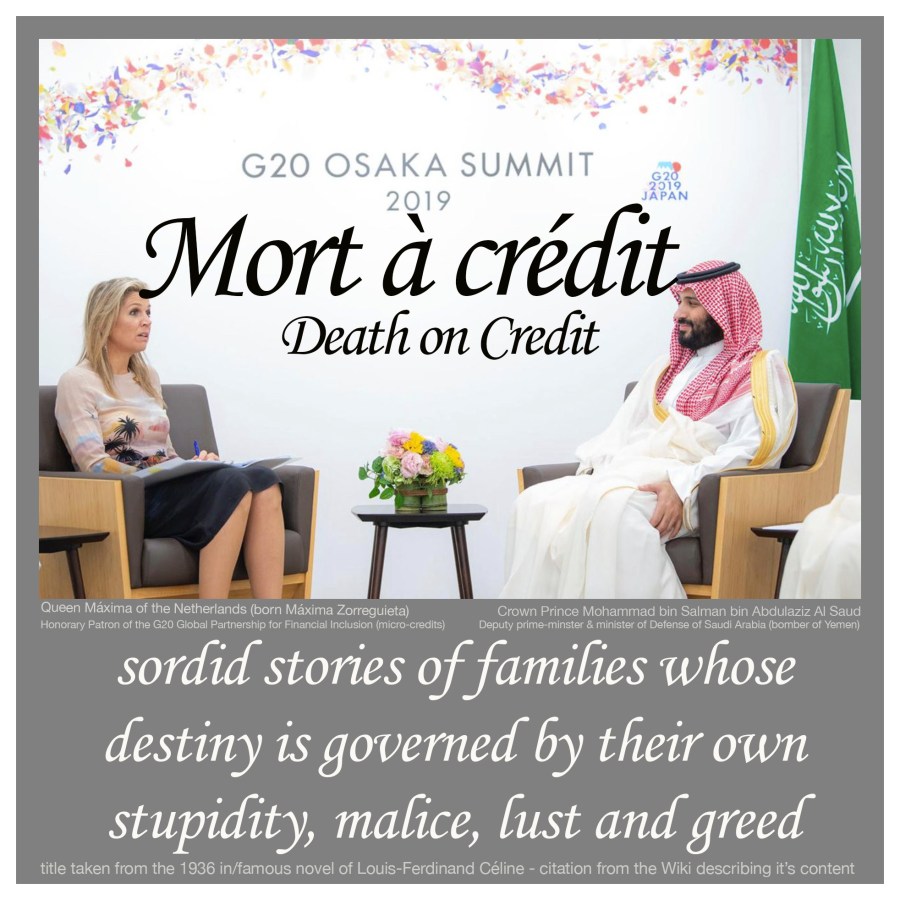















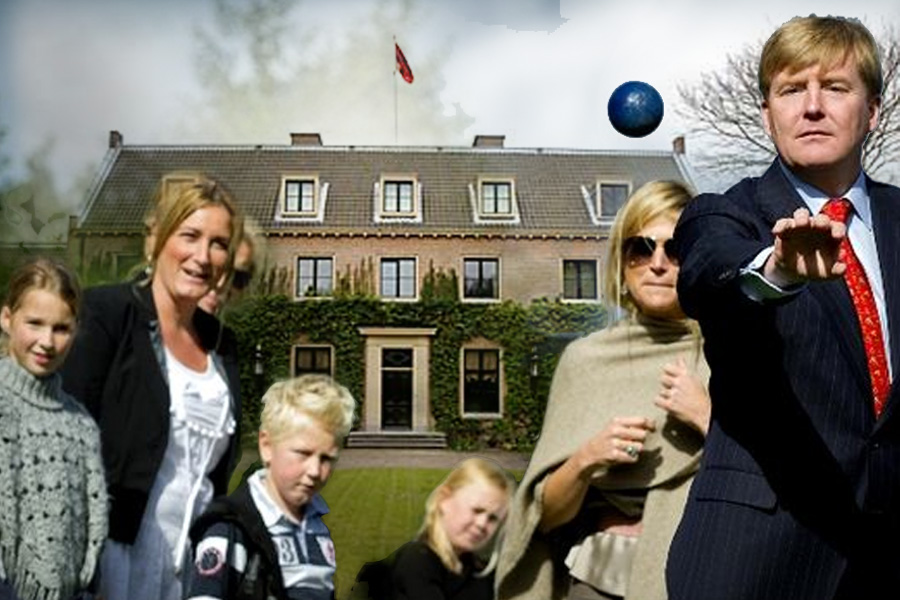
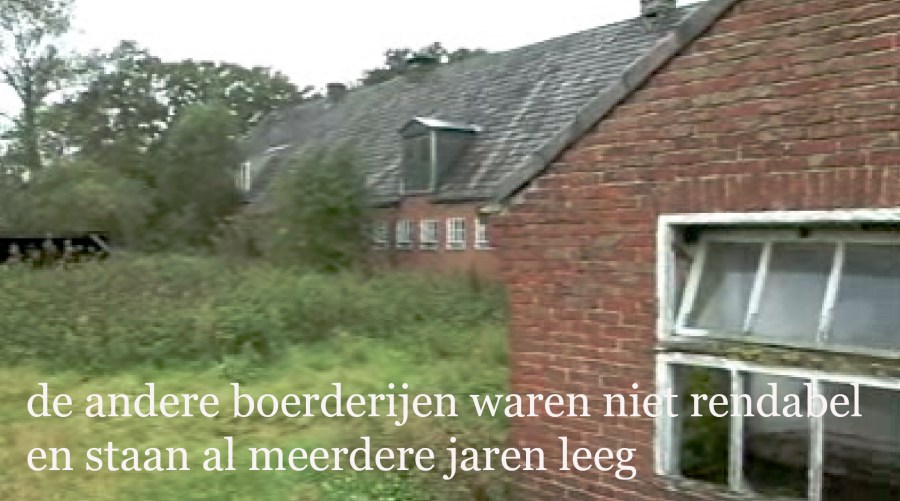










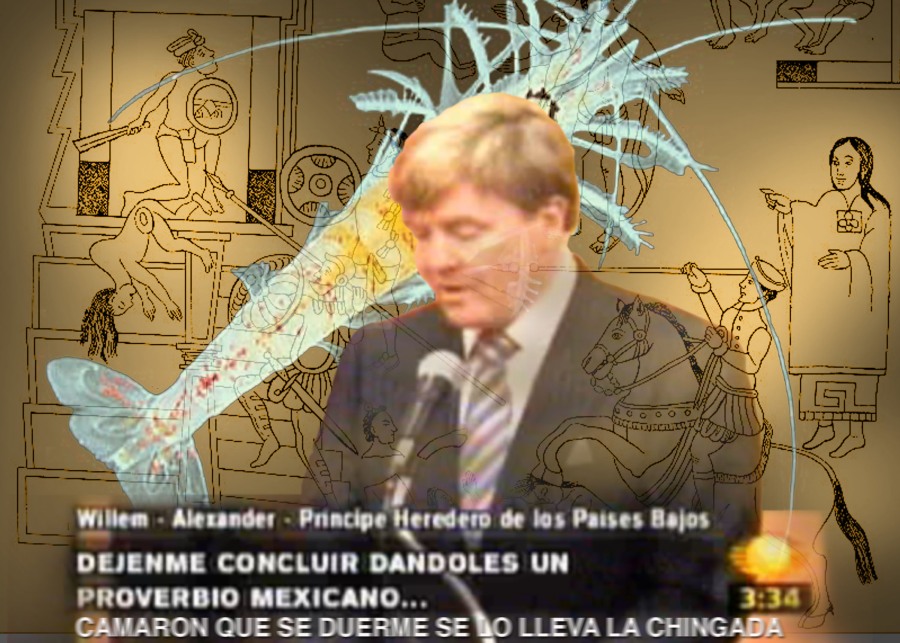
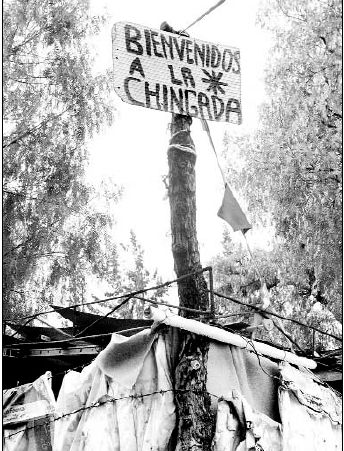





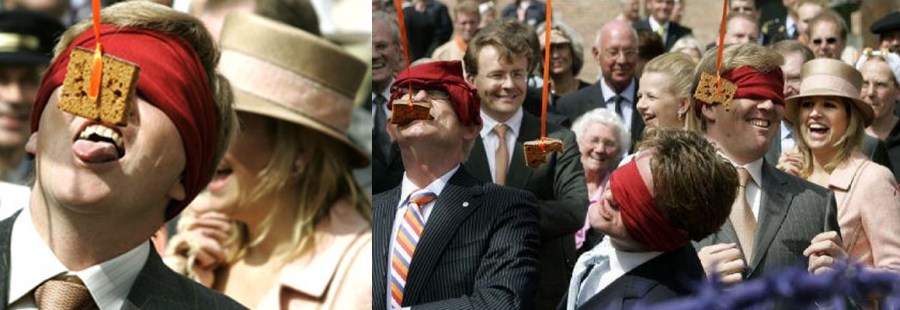
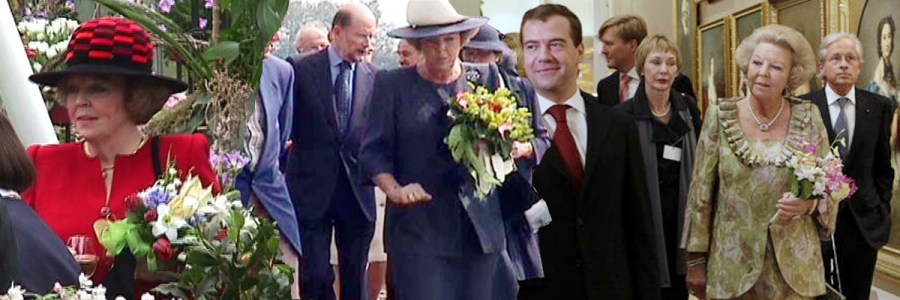 V
V



